How to Check If a Link Is Safe
There are a multitude of cyber threats that target us online through unsafe links, such as phishing, malware attacks, and scams. It is crucial to exercise caution when clicking on any link that appears on the internet. Before clicking on any link, you should always double-check the sender's identity and the website's credibility. Because one wrong link can infect your device with malware, cause data theft, or even lead to financial loss.
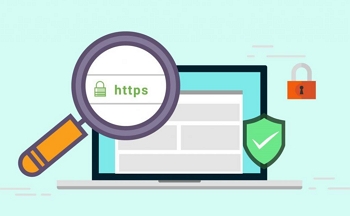
Do you regularly receive random links via email, WhatsApp, or other platforms, making you uncertain about their authenticity? Fear not! I've got you covered. Let’s review effective methods to check if a link is safe to navigate the web with confidence.
The Importance of Checking the Safety of a Link
As cyber threats continue to evolve, individuals and businesses must take the necessary precautions to protect their sensitive information and data. Checking the safety of a link is an essential step in maintaining online security. Being vigilant and taking the necessary precautions can significantly reduce the risk of falling victim to cyber threats. When you click on a deceptive link can have serious consequences, such as infecting your computer with malware or falling victim to online scams.
Top 9 Link Checkers to Check Website Safety
In case you are often finding suspicious or unsafe links, you won't have to worry about it anymore. We'll review the top 9 link checkers, along with their specialized skills, such as malware detection and domain history analysis.
Google URL Checker
Google URL Checker offers a convenient and efficient solution to cross-check Link Transparency Reports instantly. To ensure safe browsing, you can verify if a website is flagged for phishing, malware, or other security threats. In case you suspect you receive a malicious link, you can copy the link from the platform you receive (Whether through Email, WhatsApp, or Messenger), then visit the Google URL Checker website, paste the link and click on the search icon. Make sure the site status confirms 'No unsafe content found.'
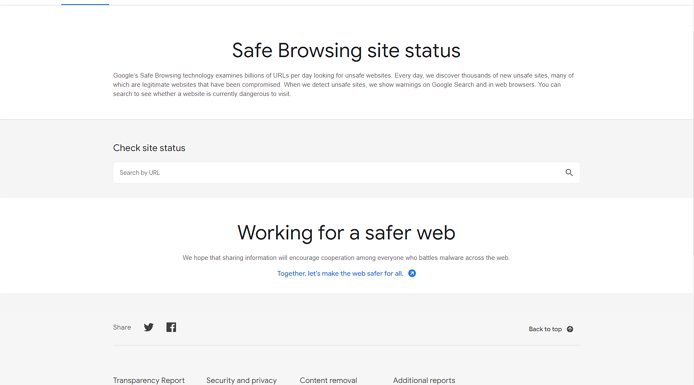
PSafe Dfndr Lab Link Checker
PSafe Dfndr Lab Link Checker is a comprehensive link checker tool. This service evaluates URLs in real time, analyzing potential risks associated with phishing, malware, and other online threats. PSafe has recently added a cutting-edge vulnerability scanning tool, designed specifically for websites and APIs, to its suite of security solutions. The platform provides users with immediate feedback on the safety of the links they encounter. You can download a free Dfndr security app to manage storage, Wi-Fi security URL checker, and anti-hacker protection. To enjoy premium features, get a 3-day free trial of dfndr security PRO, unlocking extra features.
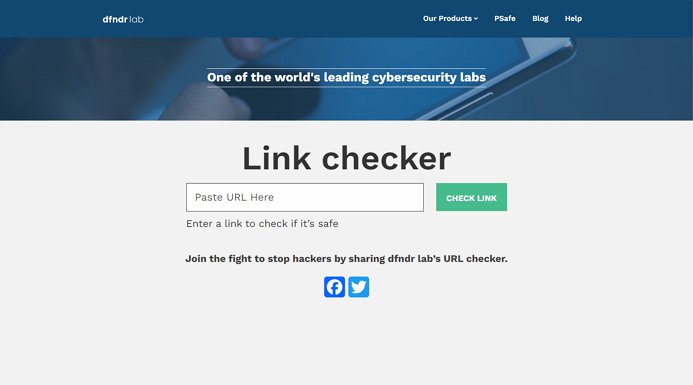
Norton Safe Web
Norton Safe Web is a widely recognized link checker that utilizes an automated analysis system. It assesses websites based on community ratings and reviews. In addition, Norton Safe Web analyzes potential security risks, including virus and spyware attempts. Users can utilize the Norton Safe Web website or browser extensions for real-time safety evaluations as they browse the internet. The main Web page provides warnings regarding the most recent harmful websites and links categorized as threats.
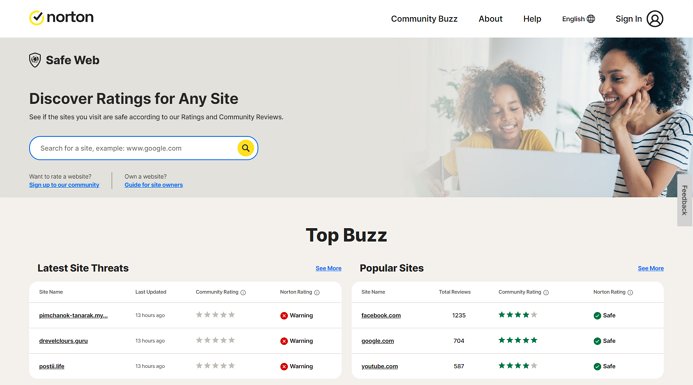
Ahrefs Broken Link Checker
A broken link, aka a dead link, is a hyperlink that no longer leads to the intended destination. Broken links can arise for various reasons, like websites being moved, deleted, or temporarily unavailable. They can disrupt your browsing experience and prevent you from accessing the information you need. Luckily, Ahrefs Broken Link Finder can help you identify broken links on your website. It can crawl your website and scan the links, reporting any that are broken. This can help you fix these links quickly and ensure that your website is providing a seamless user experience.
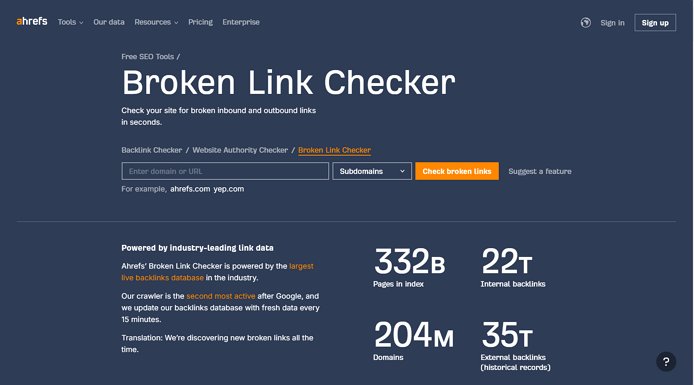
Sucuri SiteCheck
Sucuri SiteCheck employs advanced malware detection algorithms to scan websites for malicious code or files. It is a free online tool that can scan your website for security concerns. The tool analyzes websites for malware, blacklisting, outdated CMS, and other important security issues. You can even get IP address, CDN and CMS details. It also provides a report on the overall security of your website. Sacuri primarily helps bloggers and businesses identify and eliminate any potential threats that could compromise their site security.
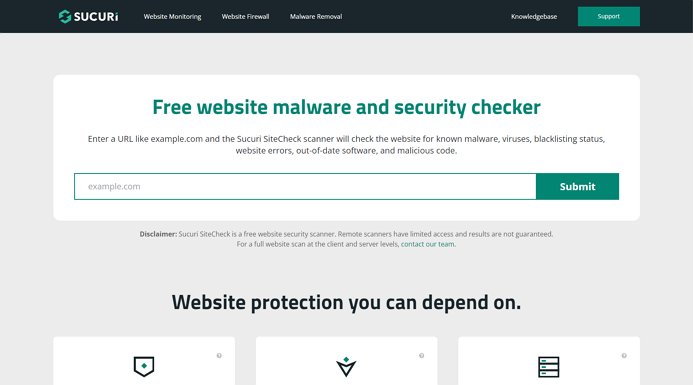
ScanURL Link Check
ScanURL is an online link checker designed to analyze the safety and reputation of URLs. It serves as a reliable tool for individuals who want to verify the legitimacy of a link before clicking on it, helping to prevent potential security threats and phishing attacks. The platform verifies if the provided website has been reported for phishing, hosting malware/viruses, or poor reputation. For security purposes, ScanURL utilizes reputable third-party services like Google Safe Browsing Diagnostic, PhishTank, and Web of Trust (WOT) to assess potential threats.
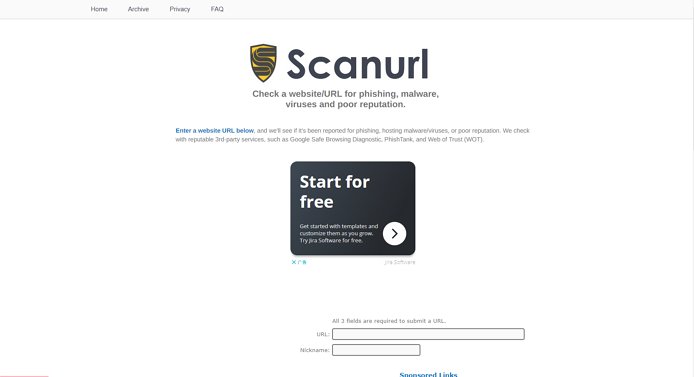
VirusTotal
VirusTotal is another recognized and secure online service that provides comprehensive analysis of URLs and files for potential security threats. Developed by Chronicle Security, a subsidiary of Google, VirusTotal aggregates results from various antivirus engines and other scan engines to offer a thorough assessment of website safety. Users can examine potentially malicious files, domains, URLs, and IP addresses for the detection of malware and other security breaches. Furthermore, users have the option to automatically share any identified threats with the broader security community, increasing collective protection and response.
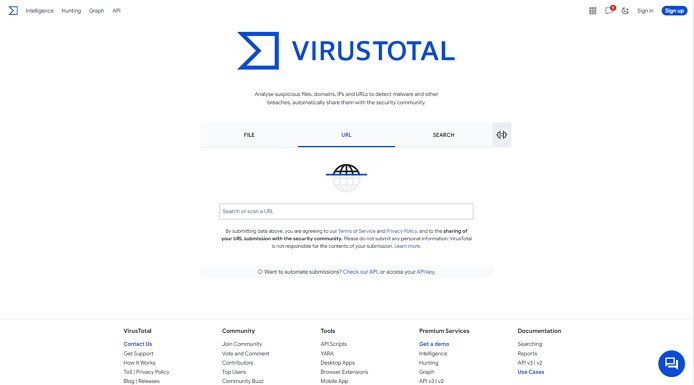
URLVoid
URLVoid is an online service that specializes in checking the safety of URLs by aggregating information from multiple sources. It provides users with a comprehensive analysis, including data from antivirus engines, website blocklists, and other security databases. You can get insights into the Domain registrant, owner, and contact details associated with a website, helping you assess its legitimacy. The tool basically delves into the history of a website, revealing past malicious activity, blacklisting status, and IP address information. Check the website's reputation across multiple platforms, including Google Safe Browsing and Web of Trust.
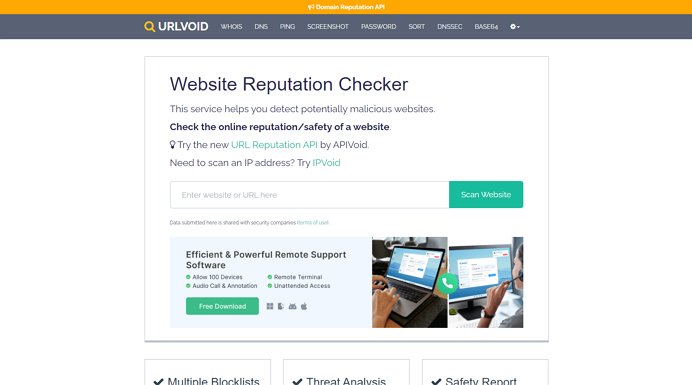
EasyDMARC Phishing Link Checker
Phishing Link Checker is a specialized tool designed to identify and analyze phishing links within emails. EasyDMARC is known for its email security solutions, and the Phishing Link Checker is a valuable component in protecting users from deceptive links that may lead to phishing websites. The tool is designed to detect any suspicious links in emails, allowing users to avoid clicking on them and protecting them from online payment scams. Additionally, it allows users to report any suspicious emails to EasyDMARC.

Other Methods to Check If a Link Is Safe
It is crucial to ensure that the link you click on is safe and secure. Malicious links can expose your personal information and compromise the security of your devices through viruses, malware, or phishing attacks. For your online safety, here are some additional tips to verify or check if a link is safe:
1. Hover Over the Link
One of the simplest ways to check the safety of a link is to hover your mouse cursor over it without clicking. This will display the full URL in the bottom left corner of your browser window. Take a moment to carefully inspect the link address that appears in your browser's status bar or tooltip. Make sure the URL matches the website you expect to visit and doesn't include any suspicious or unfamiliar domain names.
2. Check for HTTPS
In case you suspect there is something wrong with the link, check the structure and spelling of the URL. Cybercriminals often create fake websites with URLs that mimic legitimate ones but include slight variations. Check for any misspellings, extra characters, or unusual subdomains that may indicate a fraudulent link.
3. Look for a Clear Privacy Policy
Every legitimate website should have a clear and accessible privacy policy outlining how they collect and use your information. If it’s hidden or entirely missing, think twice before visiting the website.
4. Check for Contact Information
A website with nothing to hide shouldn't be afraid to share contact information or at least a Contact Us form. Look for clear contact information like email addresses, phone numbers, or physical addresses. This transparency builds trust and allows users to reach out if something feels fishy.
5. Check Google Reviews or Ratings
Another effective way to gauge a website's legitimacy and trustworthiness is to check Google reviews and ratings. Look at the overall star rating of the website to hear what others have experienced. A high rating (generally 4 stars or above) indicates positive user experiences, while a low rating (below 3 stars) may raise concerns.
6. Check Domain Age And Ownership
Instantly view Domain registration details and when the domain was registered for free. Newly registered domains (less than a year old) are often preferred by scammers. Check the domain's age using tools like WHOIS or DomainTools.
7. Check If it's a Full URL
Beware of shortened links! They can mask dangerous destinations. Whenever possible, view the full URL before clicking. Hover your mouse over the link to reveal the full URL in the bottom left corner of your browser.
8. Use a Backlink Analysis Tool
Official and reputable websites tend to have backlinks from other reputable sites. A backlink analysis tool like Ahrefs can uncover a website's backlink profile. A healthy backlink profile comprises links from diverse, high-authority websites. If the backlinks seem spammy or irrelevant, it's a red flag.
What Is a Suspicious Link?
A suspicious link is an unusual URL that raises concerns about its legitimacy, security, or the potential risks associated with accessing it. These links are often characterized by misleading or deceptive attributes that indicate negative intent or an attempt to engage in harmful activities. It is crucial to recognize and understand the characteristics of potentially harmful links for your safety and that of your family members.
Sometimes, it’s easy to spot an unusual link if you know what to look for. Common warning signs include long URLs, misspellings, or suspicious-looking domain names. Additionally, links that take you to an unfamiliar website should be avoided.
Protect Your Kids from Malicious Links
AirDroid Parental Control protects your children from online threats by taking a proactive approach. The application effectively blocks any malicious links and URLs, ensuring a safer online experience for everyone. It also provides the ability to monitor your child's online activity, ensuring that they are staying safe and responsible.
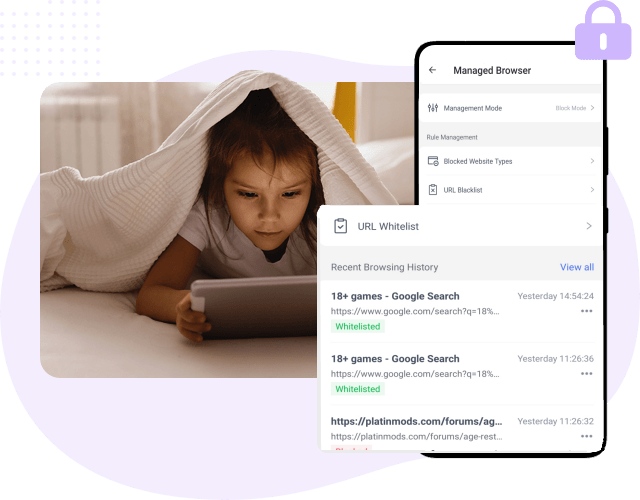
The Managed Browser feature is a standout component of AirDroid Parental Control. You can view your child's browsing history, change whitelists, add URL blacklist, and receive alerts when your child attempts to access malicious or unsafe links. It gives you more control over what websites your kids can access, and you can even set time limits on how long they can spend online.
Here is how to use the AirDroid Parental Control app.
Step 1. Download the AirDroid Parental Control app. You can also visit the web version at webparent.airdroid.com directly. Create an account and then log in.
Step 2. Install AirDroid Kids on the target phone. Bind the device by entering the pairing code. Make some necessary settings and add precise information.
Step 3. Then install AirDroid Browser on your child's Android phone and set as default browser. Now open AirDroid Parental Control and tap Managed Browser. You can add malicious or unsafe URL to the blacklist.
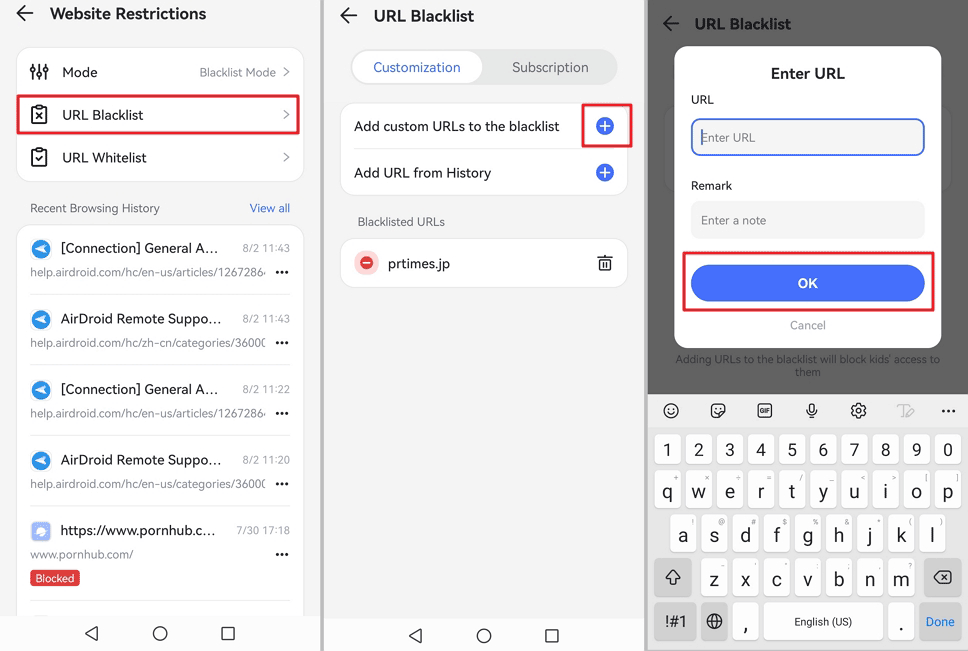
Conclusion
You've probably gained the knowledge to check link safety and avoid online pitfalls. However, It's important to be cautious when clicking on links, even if you recognize the sender. Always check the link before opening it, and never view any attachments from unknown senders. Moreover, keep your computer's security software up to date to protect your computer from potential threats.
If I accidentally click on a suspicious link, follow this.
1. Disconnect from the internet
2. Run a thorough scan with your updated antivirus software
3. Immediately change your passwords for critical accounts like email, banking, and social media.
Here’s how to check if a website is legit.
●Check for secure connections (HTTPS) and a padlock symbol in the browser address bar.
●Review the "About Us" page with information about the website's mission, team, and contact details.
●Use tools like WOT (Web of Trust) to see community-based safety ratings and user reviews.
●Read and search for independent website reviews to see what others experienced. Look for consistent negativity as a red flag.
The following signs indicate a phishing or scam site
●The link might pressure you to act quickly, claiming your account is in danger or offering a limited-time deal.
●Legitimate websites rarely have typos or grammatical mistakes.
●Watch out for altered spellings of well-known brands or domains that don't match the website's name.
●Unrealistic promises.






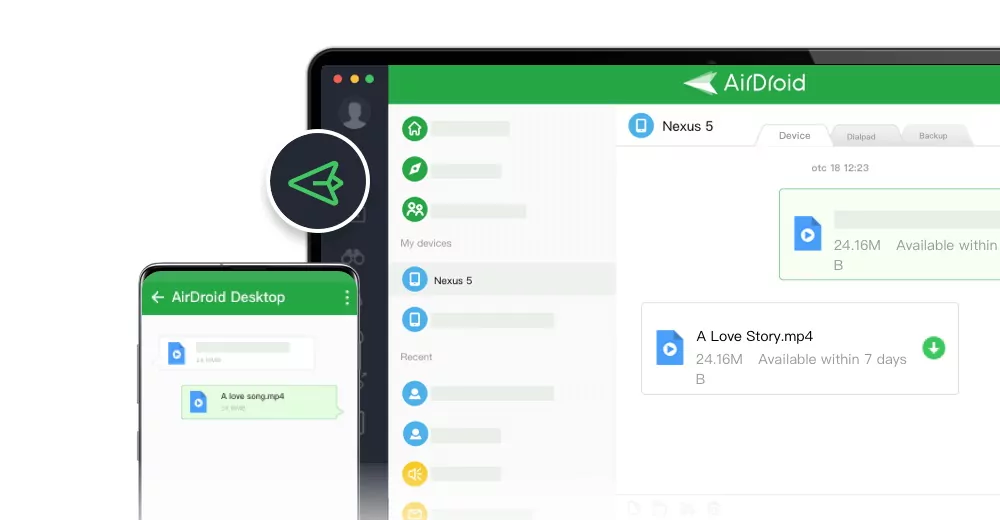




Leave a Reply.